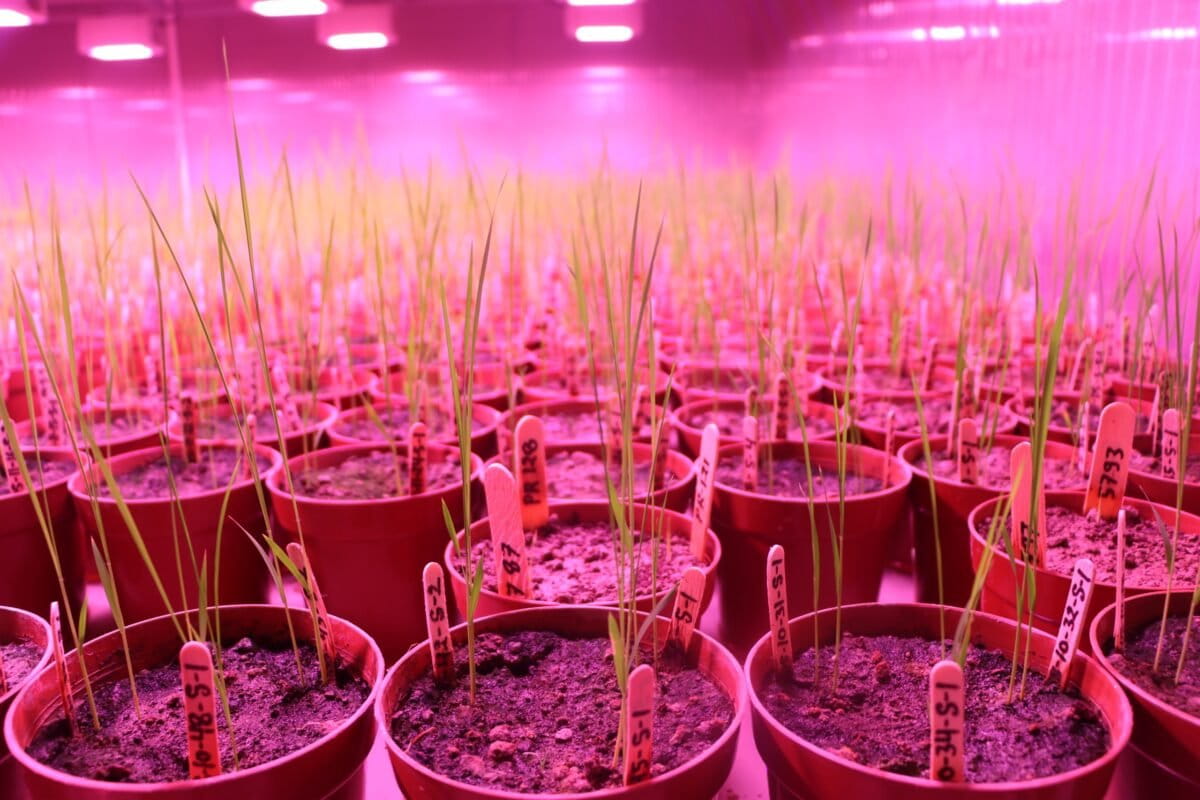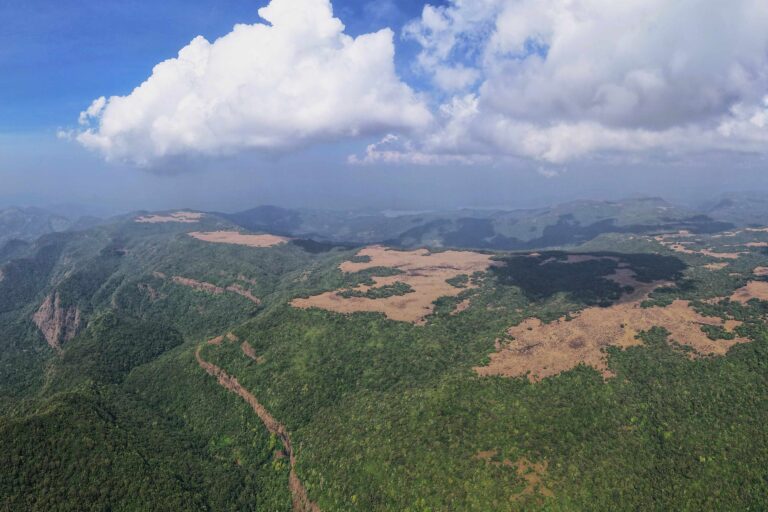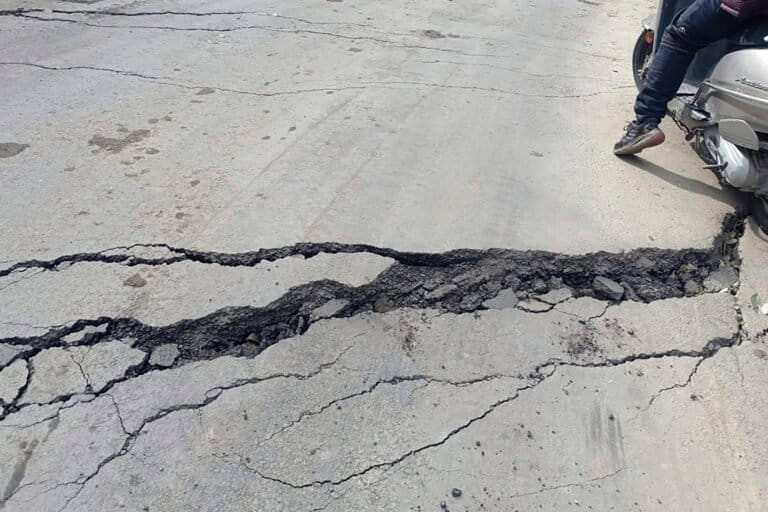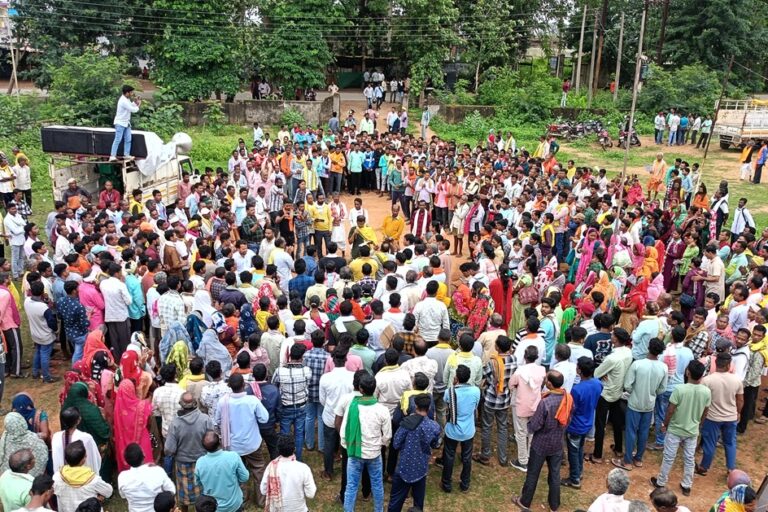- In Andhra Pradesh and beyond, farmers are adopting solar-powered cold storage systems to help prevent post-harvest losses, reduce transportation costs through on-site storage, and improve incomes.
- Farmer Producer Organisations (FPOs) are playing a key role in the adoption of cold storage through models for owning, leasing, or sharing to make it affordable for farmers.
- Experts say decentralised renewable energy can boost the adoption of solutions that can strengthen livelihoods and reduce emissions. But scaling these solutions will require stronger policy, better financing, and increased awareness.
“When we used to take our vegetables to the market, we often had to sell whatever was left at throwaway prices to avoid spoilage,” says Routhu Bharathi, a farmer from Badangi village in Vizianagaram district, Andhra Pradesh. “But with the solar cold storage facility starting in 2021, we now have the confidence and assurance that we don’t have to discard or undersell our produce.”
Sambi Reddy, a 53-year-old farmer from Kollipara village in Guntur district, shares a similar experience. At dawn, he stacks bundles of pulses and chillis into a humming solar-powered cold storage unit. Just eight years ago, he would have had to race against the tropical heat.
India has had a cold storage scheme since 2008. However, these farmers’ experiences suggest that they received little help due to a lack of affordable and reliable infrastructure. This meant Reddy often lost nearly a third of his crop to spoilage. Now, he stores his produce and also buys from a group of organic farmers who are part of a Farmer Producer Organisation (FPO). He stores their crops and sells them later as by-products.
The 10-tonne cold storage unit cost ₹12.5 lakhs (₹1.2 million), of which ₹9.37 lakhs (₹0.9 million) was subsidised by the Mission for Integrated Development of Horticulture (MIDH) and Rashtriya Krishi Vikas Yojana (RKVY) and paid directly to EcoFrost, the manufacturer and implementing company. The Shreshta Farmers Producer Organisation (the FPO, of which Sambi Reddy is a part) covered the remaining amount. “This is very convenient and useful for small-holding farmers or entrepreneurs like me. I only buy organically grown produce from farmers and store it here and later sell it as by-products in a store which I run,” says Reddy.
Before setting up his own solar cold storage in 2022, Reddy used to rent space in another village where he paid ₹225 per sack (70 kg) every year. “Apart from the cost of storage, I am saving so much on transport costs. It is very convenient now that I can store any number of sacks,” he says, smiling.
These examples are testament to how farmers in Andhra Pradesh, a state that produced 259.99 lakh metric tonnes and contributed around 7% of India’s total horticulture output in 2021-22, benefit from decentralised, solar-based solutions. A recent study by the National Centre for Cold-Chain Development (NCCD) explains this with chilli, a key crop in Andhra Pradesh. It contributes 32% of India’s chilli production and cultivates over 15 varieties. In 2024, the state’s chilli cold chain facilities saw 70-80% utilisation. The study also notes that such facilities demonstrate a mid-to-advanced level of energy efficiency and solar PV adoption.
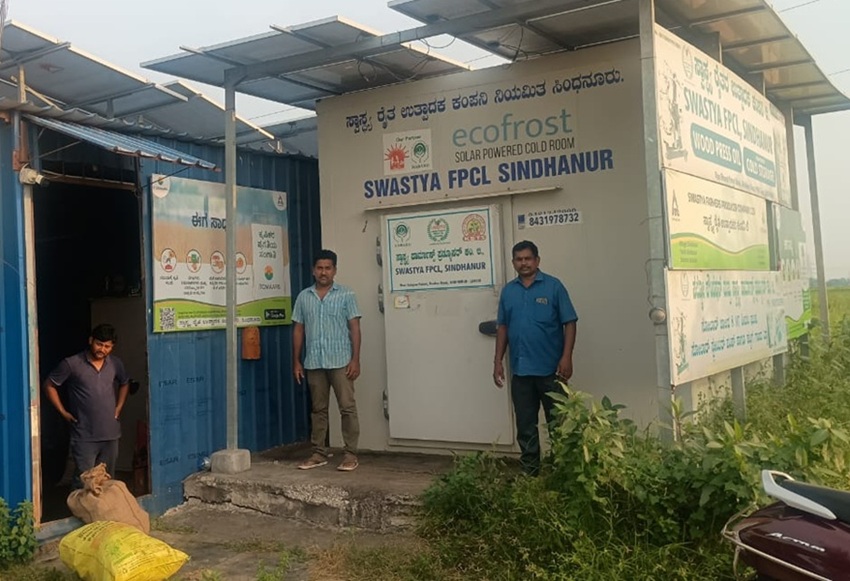
FPO-led cold storage
The NCCD report, released in September 2025, highlights how FPOs are emerging as key adopters of cold storage in states like Andhra Pradesh. It describes the cooling-as-a-service (CaaS) model as a “highly effective” approach suitable for nationwide implementation at the farmgate level. Andhra Pradesh and Maharashtra are cited as early adopters of this pay-as-you-use system, primarily implemented through FPOs.
The report also mentions the growing role of FPOs in streamlining the supply chain for chillis. “These organisations play a crucial role in streamlining the supply chain. By centralising the collection, sorting and processing of chillis, FPOs enable farmers to achieve economies of scale and improve market access,” it says.
With around 410 FPOs, Andhra Pradesh is among the leading states in terms of active farmer organisations. Many employ farmgate-level cold rooms as part of their operations. These facilities help maintain the quality and freshness of chillis during storage, reducing post-harvest losses and improving market readiness, the report states, a point that was also emphasised during interactions with farmers.
“I grow turmeric, pulses, and corn organically and follow Good Agricultural Practices (GAP). Sambi Reddy from the Shreshta Farmers FPO buys the produce from me directly, and I am really happy that I’m earning a fair price without having to deal with middlemen,” says Bonthu Koti Reddy, a farmer from Kollipara village in Guntur.
“For every 100 farmers, one director oversees operations. They collectively purchase produce from around 900 farmers, store it in the Badangi cold storage, and share profits among all members,” says Lachipatni Santhi, CEO of Deeksha Mahila Welfare Society in Badangi, Andhra Pradesh.
The model is also spreading to other states. In Karnataka, for instance, many FPOs are exploring the CaaS model. “We set up the cold storage facility in Sindhanur, Karnataka, in 2020 with the help of the SELCO Foundation, initially storing perishable vegetables like tomatoes, brinjals, lemons, and mangoes,” says Umakant Sharma, director of Dhaanya FPO. “For the first seven to eight months, farmers could store their produce free of cost, after which we began charging a nominal fee of ₹10 per crate (50 kg). Now we procure produce from farmers, store it, and sell it when market prices rise, sharing profits with them.” He adds that the cold storage operates using AI technology. Since different produce, such as tomatoes and bananas, require different temperatures, the system automatically sets an optimal mid-range temperature through the application to preserve them both effectively.
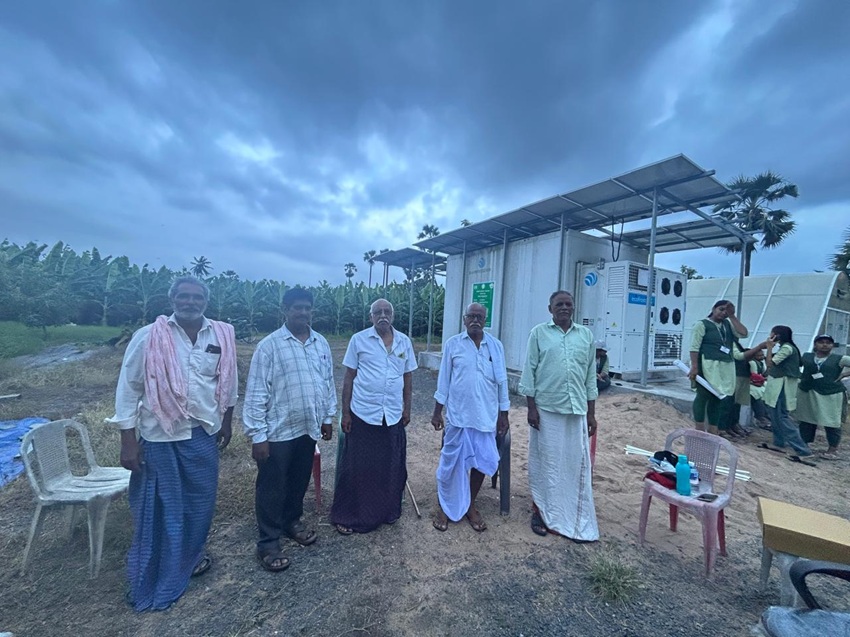
A significant portion of India’s annual post-harvest losses occurs at the farm gate. To address this, the Indian government is making an effort at several levels. For instance, Energy Efficiency Services Limited (EESL), a joint venture of public sector utilities under the Ministry of Power, has launched decentralised solar-powered cold storage units with a capacity of 5–10 MT to support smallholder and marginal farmers. Government subsidies, accessible loans, and falling solar panel prices have made these cold storages increasingly affordable, even for smallholders. FPOs are also establishing their own collection centres and farmgate-level infrastructure to become more self-reliant, as highlighted in the NCCD report.
Clean energy for farms
A NABARD (National Bank for Agriculture and Rural Development) report published in July estimates that India loses 20–30% of its total agricultural production after harvest, mainly due to spoilage, physical damage, poor handling, and inefficient storage and transport. It quotes the Ministry of Food Processing Industries’ estimate and claims that the annual value of these post-harvest losses is approximately ₹920 billion.
Fruits and vegetables, being perishable, face the highest wastage, as high as 35–40% for crops like tomatoes, potatoes, and onions. The report notes that India continues to suffer “substantial post-harvest losses due to poor storage facilities, inadequate cold chains, and insufficient processing units.”
A separate study, published by the Council on Energy, Environment and Water (CEEW) and the Villgro Innovations Foundation in April, highlights how decentralised renewable energy (DRE) is increasingly helping farmers adopt new solutions, such as cold storage, and transforming rural livelihoods. Along with cold storage, it lists that solar-powered dryers, dehydrators, and several other solutions can effectively reduce post-harvest losses while reducing emissions associated with food waste, which accounts for approximately 8-10% of global greenhouse gas emissions. CEEW is a think tank based in New Delhi, and Villgro Innovations Foundation is a social enterprise incubator.
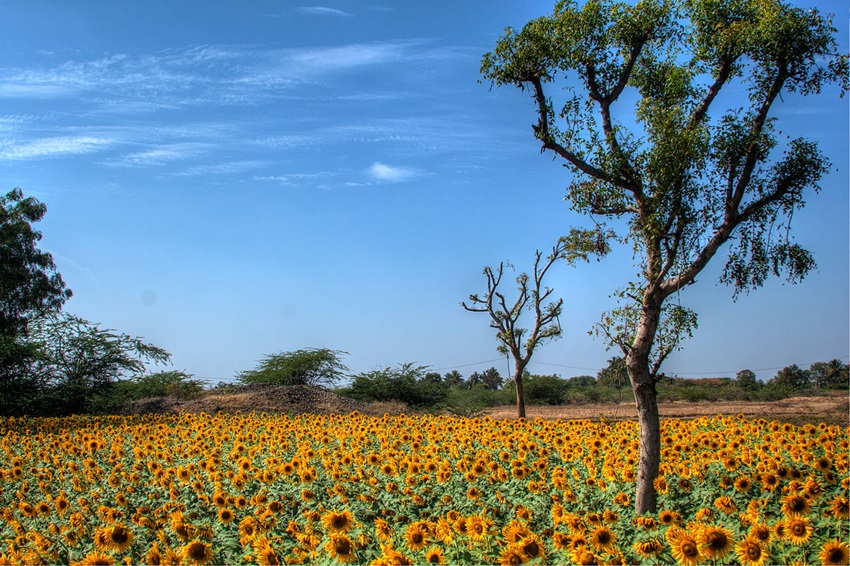
Divya Gaur, Programme Lead, CEEW, notes that DRE-based livelihood solutions have diversified and scaled significantly: beyond solar water pumps, there are now market-ready products for agriculture (sprayer, weeder, rice mill, oil processing, etc.), animal husbandry (fodder grow unit, milking machine, milk chillers, etc.), and small retail (refrigerators, small-scale cooling solutions, etc.), helping users boost productivity and diversify income streams. “Designed for local contexts and last-mile conditions,” she says, “these DRE solutions can overcome the limitations of conventional technologies and significantly enhance incomes for smallholder farmers.”
Based on CEEW research, Gaur claims that just 12 DRE livelihood technologies — including solar pumps, solar dryers, and solar refrigerators — could positively impact 37 million livelihoods. These solutions were found to impact users’ incomes, productivity, and social aspects.
However, India’s post-harvest cold chain remains heavily skewed toward single-commodity bulk storage, with roughly 75% of capacity dedicated to potatoes. Experts say that while DRE can play a major role in minimising post-harvest loss, it requires stronger policy support.
Gaur notes that accelerating DRE adoption will depend on three interlinked components — policy, finance, and demand generation. On the policy front, government schemes need better alignment and integration of DRE solutions, ensuring that public funds directly support clean energy access in rural areas. Strengthening finance is equally important, with expanded rural credit and flexible financing options enabling small farmers and enterprises to manage upfront costs. The third component is demand generation, which can be advanced through awareness campaigns, pilot projects, and partnerships that build trust, demonstrate benefits, and help deepen rural markets for DRE technologies.
This story is supported by JTRC Fellowship offered by IIT Kanpur, Climate Trends, and Earth Journalism Network.
Banner image: Farmers pack cauliflowers harvested at a farm in Pedavuppudu village, Guntur district, Andhra Pradesh. (AP Photo/Altaf Qadri)



